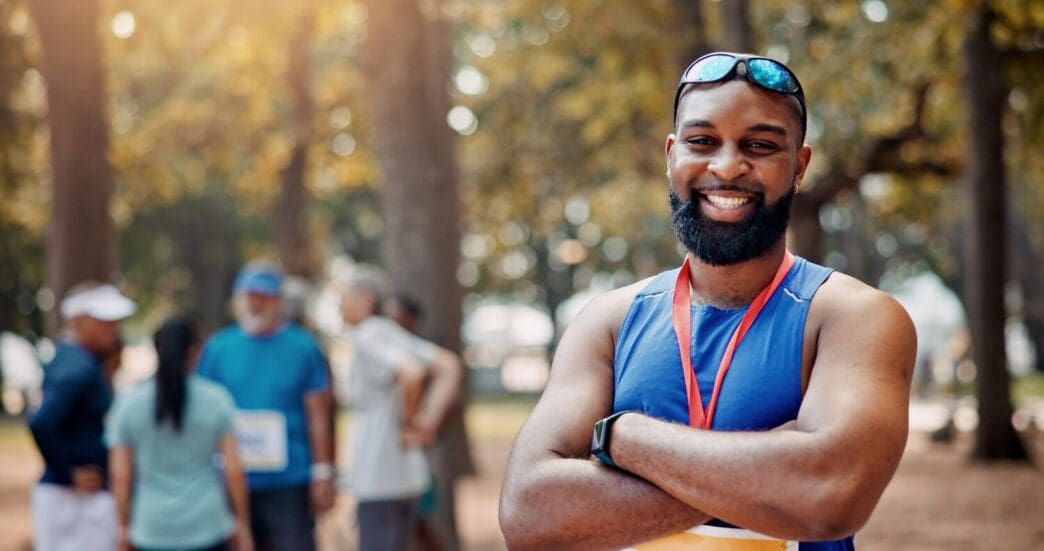A Quick Takeaway
The Story Behind the Trend
How to Make It Work for You
The Community View
Embracing a rainy day run in Miami demands the right gear to ensure comfort, safety, and performance, transforming a potential washout into an exhilarating experience. For anyone who lives in or visits the Magic City, understanding how to navigate its unique, often warm and sudden downpours is crucial for maintaining a consistent running routine. The key lies in selecting apparel and accessories that prioritize breathability, quick-drying properties, and visibility, allowing runners to stay dry enough, prevent chafing, and remain seen, ultimately fostering a resilient and enjoyable approach to fitness regardless of the weather.
Why Embrace the Rain Run?
While many runners shy away from precipitation, running in the rain offers a unique set of benefits. It builds mental toughness and resilience, proving to yourself that your commitment to fitness isn’t dictated by external conditions. The cooler temperatures can also be a welcome reprieve from Miami’s intense heat and humidity, offering a more comfortable environment for sustained effort.
Beyond the physical and mental gains, rainy runs often mean fewer people on the paths and trails, providing a sense of solitude and a deeper connection with your surroundings. The crisp, clean air and the rhythmic sound of raindrops can create a meditative experience, making your run feel more invigorating and memorable.
The Unique Challenge of Miami Rain
Miami’s rain isn’t just “rain”; it comes with its own set of distinct characteristics that influence gear choices. Unlike colder climates where heavy waterproof layers are essential, Miami’s downpours are often warm, sometimes even hot, and almost always accompanied by high humidity. This means that while staying dry is important, preventing overheating and allowing sweat to escape are equally critical.
The suddenness of tropical storms also requires preparedness. A clear sky can turn into a torrential downpour in minutes, necessitating gear that is either always worn or easily carried and deployed. Visibility also becomes a significant concern as dark clouds, heavy rain, and reduced daylight can make runners harder to spot by motorists and cyclists.
Outerwear: The First Line of Defense
Choosing the right jacket or vest is paramount for a comfortable rainy run in Miami. The goal isn’t necessarily to be completely waterproof, which can often lead to a sweaty, clammy feeling in humid conditions, but rather to be water-resistant and highly breathable.
Water-Resistant vs. Waterproof
A water-resistant jacket will shed light rain and drizzle, offering some protection without trapping all your body heat. These are typically lighter and more breathable. A truly waterproof jacket, while impenetrable by water, often sacrifices breathability, making it less ideal for Miami’s warm, humid rain unless it features extensive ventilation.
Lightweight Running Jackets
Look for jackets made from lightweight, packable fabrics that offer a good balance of water resistance and ventilation. Features like underarm vents, mesh panels, and adjustable hoods are invaluable. A good hood design will stay put without obstructing your peripheral vision. Many jackets can be packed into their own pockets, making them easy to carry until needed.
Running Vests
For lighter rain or when you want to protect your core while allowing maximum arm movement and ventilation, a water-resistant running vest can be an excellent option. It provides just enough protection to keep your torso comfortable without causing you to overheat, which is a common concern in Miami’s tropical climate.
Bottoms: Staying Light and Chafe-Free
Your choice of bottoms is critical for comfort and preventing chafing, which can be exacerbated by wet fabric rubbing against skin. Quick-drying materials are non-negotiable.
Running Shorts
For most Miami rainy runs, lightweight running shorts made from synthetic, quick-drying fabrics are ideal. Look for shorts with a built-in liner made from similar moisture-wicking material to minimize inner thigh chafing. Avoid cotton entirely, as it absorbs and holds water, becoming heavy and abrasive.
Running Tights or Capris
If the rain comes with a slight dip in temperature, or if you prefer more coverage, synthetic running tights or capris can be a good choice. Again, prioritize moisture-wicking, quick-drying fabrics. Compression tights can offer additional support and help reduce muscle vibration, which some runners find beneficial.
Chafe Prevention is Key
Regardless of your chosen bottoms, applying an anti-chafing balm or stick to potential friction points (inner thighs, waistline, underarms, sports bra lines for women) is absolutely essential. Wet skin and fabric significantly increase the risk of painful chafing, which can quickly ruin a run.
Footwear: Grip, Drainage, and Comfort
Your feet are particularly vulnerable in wet conditions. The right shoes and socks can prevent blisters, maintain traction, and keep your feet from feeling waterlogged.
Running Shoes
Contrary to popular belief, “waterproof” running shoes are often not the best choice for Miami’s warm rain. While they keep water out, they also trap any water that gets in (e.g., splashing over the top) and prevent sweat from escaping, leading to a swampy feeling. Instead, opt for shoes with good drainage and breathable mesh uppers that allow water to escape quickly. Shoes with slightly more aggressive outsole treads can also provide better grip on wet, slippery pavement.
Running Socks
This is where many runners make a mistake. Cotton socks are a definite no-go as they absorb water, become heavy, and increase the likelihood of blisters. Instead, choose socks made from synthetic materials like polyester, nylon, or a blend, or even merino wool. These materials wick moisture away from your skin, dry quickly, and maintain their shape, reducing friction and preventing blisters.
Headwear: Clear Vision, Focused Run
Keeping rain out of your eyes is crucial for safety and comfort, allowing you to focus on your footing and surroundings.
Running Caps and Visors
A lightweight running cap or visor with a brim is invaluable for rainy runs. The brim effectively shields your eyes from raindrops, improving visibility. Many running caps are made from quick-drying, moisture-wicking fabrics and feature ventilation panels to prevent overheating. A visor offers similar eye protection while allowing maximum ventilation for your head.
Headbands
For those who prefer not to wear a cap or visor, a moisture-wicking headband can still help manage sweat and prevent it from running into your eyes, which can be exacerbated by rain.
Essential Accessories for Rainy Runs
Beyond the primary apparel, a few key accessories can significantly enhance your rainy day running experience.
Phone and Electronics Protection
Most modern GPS watches are water-resistant enough for a run in the rain. However, your smartphone needs dedicated protection. Invest in a waterproof running pouch or a simple heavy-duty Ziploc bag placed inside a running belt or armband can suffice. Ensure it’s sealed tightly to prevent any moisture ingress.
Visibility Gear
Rainy conditions often mean reduced visibility. Choose gear with reflective elements built into the fabric or add clip-on lights to your clothing. Brighter colored clothing, such as neon greens, yellows, or oranges, will also make you more visible to drivers and cyclists, especially during dark, overcast conditions.
Anti-Chafing Products
Reiterating its importance, anti-chafing balms or creams are not just helpful but essential. Apply them generously to any areas prone to friction, including under your arms, between your thighs, and around your sports bra or waistline.
Miami-Specific Considerations for Rainy Runs
The unique climate of Miami demands a slightly different approach to rainy day running gear than other regions.
Humidity Amplifies Wetness
Because of the high humidity, even when it’s not actively raining, your body will still be sweating significantly. This means that breathability should always trump absolute waterproofing. You want gear that allows moisture (both rain and sweat) to escape, preventing a clammy, uncomfortable feeling.
Warm Rain vs. Cooler Rain
Most Miami rain is warm. Therefore, avoid insulated or heavy layers that you might wear in a cold, rainy climate. Focus on single, lightweight layers that can shed water and dry quickly. On the rare occasion of a “cold front” bringing cooler rain, a slightly thicker, but still breathable, long-sleeve base layer under a water-resistant shell might be appropriate.
Sudden Storms and Preparedness
Miami’s weather can change rapidly. Always check the forecast, but be prepared for unexpected downpours. Carrying a lightweight, packable jacket or vest even on days that start sunny can be a smart move. Having a plan for seeking shelter if a severe thunderstorm rolls in is also wise.
Post-Run Care for Your Gear
After a rainy run, proper care of your gear is crucial to prevent mildew and extend its life. Immediately hang up wet clothing to air dry, or wash it promptly. For running shoes, remove the insoles and stuff the shoes with newspaper to absorb moisture. Replace the newspaper every few hours until the shoes are dry. Never put running shoes in a dryer, as the heat can damage materials and adhesives.
Safety First: Navigating Wet Conditions
Running in the rain requires heightened awareness and caution to ensure your safety and the safety of others.
Reduced Visibility
Be extra vigilant when crossing streets or running near traffic. Assume that drivers may not see you, even with reflective gear. Make eye contact with drivers whenever possible. Stick to well-lit routes if running at dawn or dusk.
Slippery Surfaces
Pavement, especially road paint, grates, and manhole covers, can become extremely slippery when wet. Adjust your stride to be shorter and lighter to maintain better traction. Be mindful of puddles that might conceal potholes or uneven surfaces.
Thunderstorms
While a light rain can be invigorating, thunderstorms with lightning are a serious hazard. If you hear thunder, it’s a sign that lightning is in the vicinity. Seek immediate shelter indoors. No run is worth risking your life.
The Mental Game of Rainy Day Running
Ultimately, a successful rainy day run in Miami is as much about mental preparation as it is about physical gear. Embrace the elements, enjoy the unique sensory experience, and relish the sense of accomplishment that comes from pushing through challenging conditions. It builds character, strengthens your resolve, and adds a memorable chapter to your running journey.
Running in Miami’s rain doesn’t have to be a deterrent; with the right gear and a positive mindset, it can be an incredibly rewarding experience. By prioritizing breathable, quick-drying, and visible apparel, runners can conquer the unique challenges of tropical downpours, transforming a potentially miserable run into an invigorating adventure. Equipping yourself properly allows you to maintain consistency in your fitness routine, build mental fortitude, and truly enjoy the vibrant, albeit sometimes wet, running landscape of South Florida.







